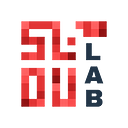“Revolutionizing the Art World: Exploring the Impact of AI in NFT Marketplaces”
In the dynamic realm of art and technology, the emergence of Non-Fungible Tokens (NFTs) has sparked a revolutionary shift in how we perceive and engage with art. This transformation is further accelerated by the integration of Artificial Intelligence (AI) into NFT marketplaces, creating a synergy that transcends traditional boundaries. In this article, we will delve into the profound impact of AI in NFT marketplaces, exploring the benefits, challenges, and examples that underscore the transformative potential of this amalgamation.
The Fusion of Art and Algorithms: A New Paradigm
At the core of AI in NFT marketplaces lies the fusion of art and algorithms, a marriage that promises to redefine the very essence of creativity. Traditional art marketplaces have often been exclusive, with a select few artists dominating the scene. AI changes this landscape by democratizing artistic creation. Algorithms can generate unique and diverse artworks, breaking away from conventional norms and pushing the boundaries of what constitutes art.
Read more:- The Future of NFT Marketplaces: Trends and Innovations
One significant advantage of AI in NFTs is the ability to create art that evolves and adapts over time. Dynamic algorithms can generate art that responds to external stimuli, such as environmental factors or user interactions. This dynamic nature adds a layer of interactivity and uniqueness to AI-generated NFTs, challenging traditional notions of static art.
The Benefits of AI-Powered Art Marketplaces
The integration of AI brings forth several advantages to NFT marketplaces. One of the key benefits is the ability to address issues of authenticity and provenance. AI algorithms can be employed to verify the authenticity of digital artworks, providing a secure and transparent way of confirming the origin and ownership of NFTs. This addresses concerns related to digital art piracy and ensures that artists receive proper credit and compensation for their work.
Moreover, AI algorithms can enhance the discoverability of artworks within NFT marketplaces. By analyzing user preferences and behavior, AI can recommend artworks tailored to individual tastes, fostering a more personalized and engaging experience for collectors. This not only benefits buyers by exposing them to art they are likely to appreciate but also aids artists in reaching a broader audience.
Challenges and Ethical Considerations
While the infusion of AI into NFT marketplaces opens up exciting possibilities, it also presents challenges and ethical considerations. One prominent concern is the potential loss of human touch in art creation. Critics argue that the essence of art lies in the unique perspectives, emotions, and experiences of human artists, and that AI-generated art may lack the depth and soulfulness associated with traditional works.
Ethical considerations also extend to the environmental impact of AI-powered NFTs. The energy consumption associated with blockchain networks, on which many NFTs are based, has raised concerns about sustainability. Striking a balance between technological innovation and environmental responsibility is crucial for the long-term viability of AI in NFT marketplaces.
Examples of Successful AI-Powered Art Marketplaces
Several AI-powered NFT marketplaces have emerged as pioneers in this transformative space. One notable example is Artbreeder, a platform that allows users to create and customize AI-generated artworks using a simple interface. Art breeder employs a Generative Adversarial Network (GAN) to produce unique and visually stunning pieces that users can then tokenize as NFTs.
Read more:- AI-Generated NFTs Simplified: Grow Your NFT Art Marketplace with Artificial Intelligence
Another noteworthy platform is Async Art, which takes a novel approach by allowing artists to create “layers” of art that can be dynamically combined and modified by collectors. This dynamic aspect of Async Art adds a layer of interactivity to the art itself, providing a new and evolving experience for collectors.
Looking Ahead: The Future Landscape of AI in NFTs
As AI continues to evolve, the future landscape of NFT marketplaces appears to be brimming with possibilities. The integration of advanced AI algorithms, including machine learning and natural language processing, could lead to even more sophisticated and interactive NFTs. The potential for AI to understand and respond to user preferences in real-time opens the door to a more immersive and personalized art-collecting experience.
Moreover, collaborations between AI and human artists could become more commonplace, fostering a symbiotic relationship where AI enhances human creativity rather than replacing it. This collaborative approach has the potential to push artistic boundaries and create entirely new forms of expression that blend the best of both human and machine creativity.
Conclusion: A New Chapter in Artistic Expression
In conclusion, the integration of AI in NFT marketplaces marks a new chapter in the history of artistic expression. The synergy between artificial intelligence and non-fungible tokens has the power to democratize art, redefine creativity, and address longstanding challenges in the art market. While there are challenges and ethical considerations to navigate, the transformative potential of AI in NFTs is undeniable, promising a future where the boundaries between human and machine creativity blur, giving rise to a rich tapestry of digital art. As we navigate this evolving landscape, one thing is certain: the fusion of AI and NFTs is reshaping the art world, offering both artists and collectors unprecedented opportunities for innovation and self-expression.
